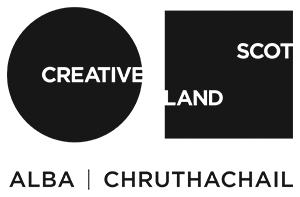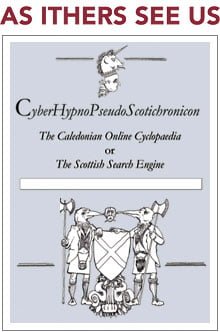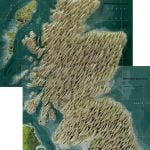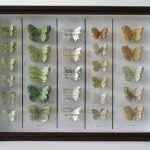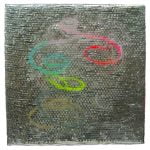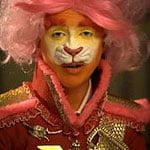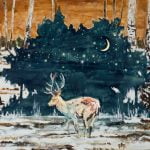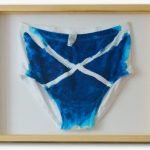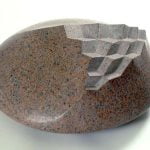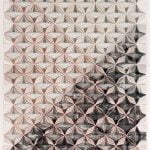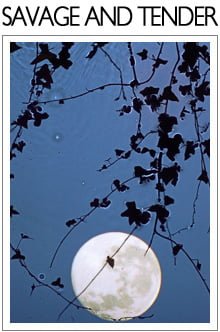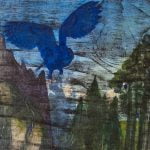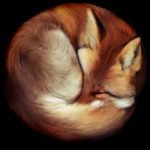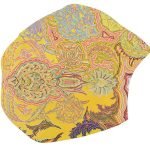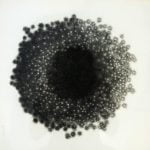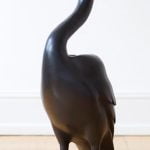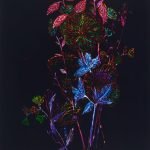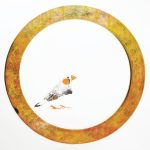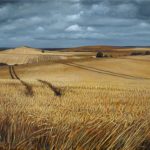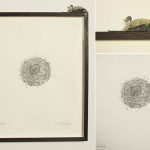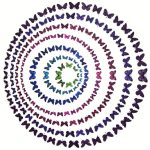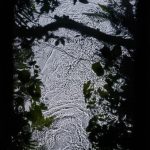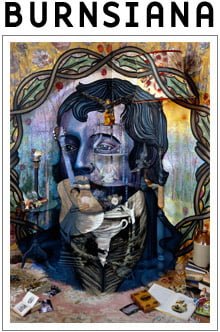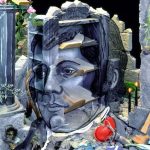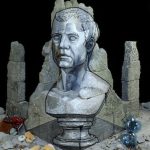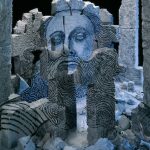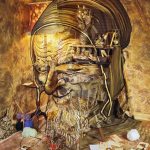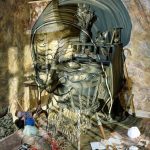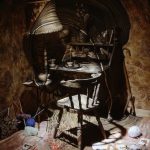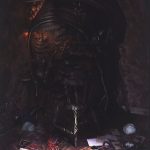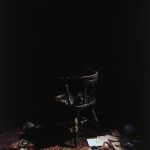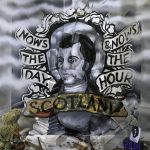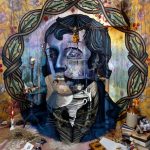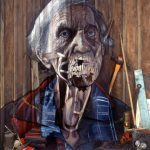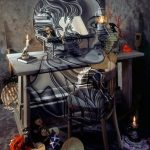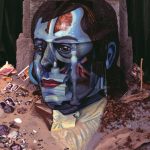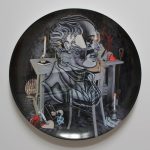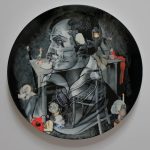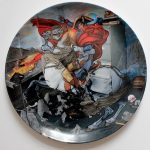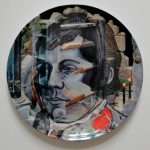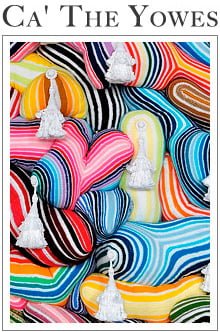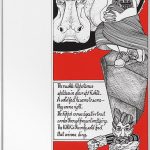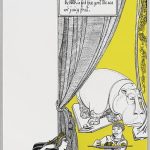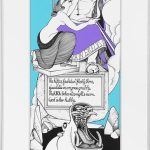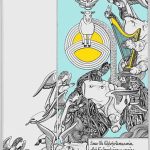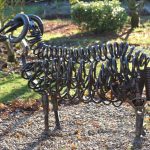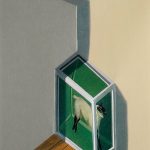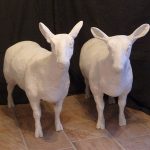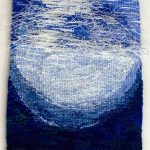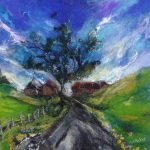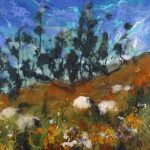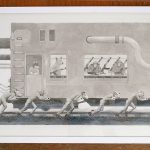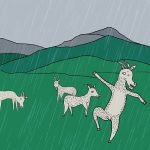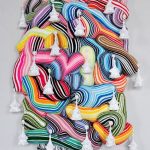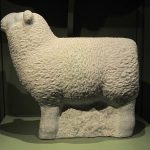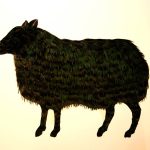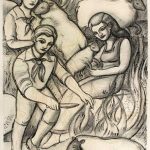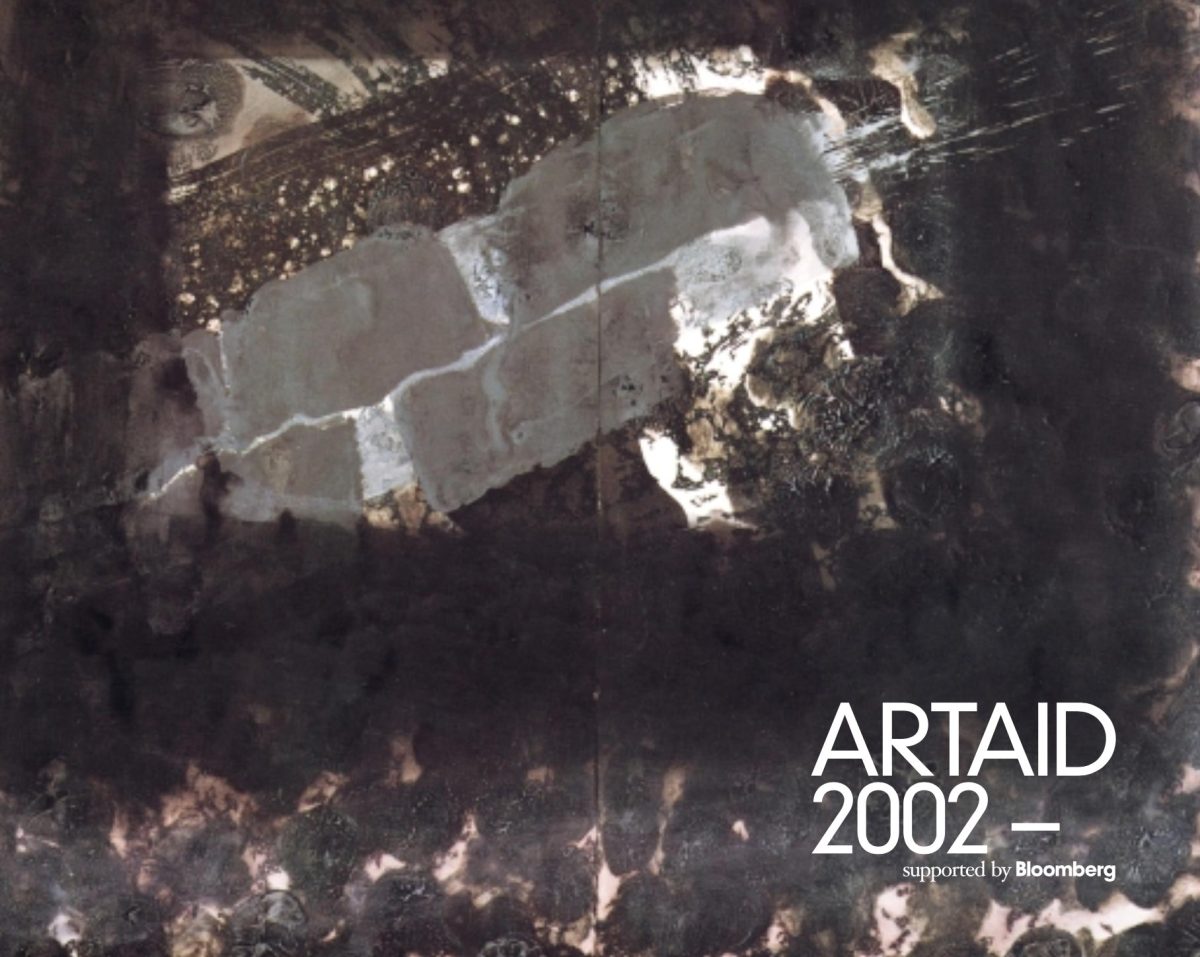As part of the Year of Homecoming 2009, in partnership with Culture Sport Glasgow, artruist organised “Inspired”, a major exhibition celebrating the life and work of Robert Burns.
“Inspired” was on display in the Old Reading Hall at The Mitchell Library, Glasgow. The exhibition featured around 50 contemporary works of art inspired by Burns’s life and works alongside a small selection of Burns related relics. Also, a limited edition print was created, incorporating the Inspired design, and there are still some available – further details on this page. We recently learned that, not only is the Inspired Limited Edition print on display in the reception area at St Andrew’s House, headquarters of the Scottish Government, it’s also hanging on the wall in Colin and Justin’s kitchen!
Since the death of Robert Burns in 1796, there have been several musical and literary events, inspired by the works of Burns. Many great poets, including William Wordsworth and John Keats have found his words inspirational as have other men of great distinction such as Abraham Lincoln and Andrew Carnegie. However, a truly international contemporary art exhibition, on the scale of ‘Inspired’, is unprecedented. There is on display, as an integral part of the exhibition, a selection of relics which have been unseen since 1896. These include an original letter from Burns, written in 1788 and the “Auld Alloway Clootie Horn”, alleged to have been an inspiration for Burns’ epic poem “Tam O’Shanter” which, in turn, has proved to be an inspiration for some of the ‘Inspired’ artists, including Vivienne Haig. For ‘Inspired’, artists were invited to submit work inspired by the life, songs and poetry of Robert Burns. As can be seen, they clearly found much to inspire them and they have been remarkably successful in conveying the contemporary relevance of his work: Mikhail Magaril, the Russian artist, makes a strong and clear statement with his contemporary interpretation of one of Burns’ epigrams; the current state of the economy has clearly not gone unnoticed by the Chapman Brothers: in their choice of medium, however, it was Burns who set a precedent in 1786 when he wrote a short tirade against Banks on a guinea note (“Lines Written on a Banknote”). There were many facets to Burns’ character, reflected in the broad range of his poetry which extends from the philosophical to the hilarious. While being perhaps best known for ‘Auld Lang Syne’, an inspiration for Ed Wright, Australian artist, Burns equally made no secret of his interest in erotic verse and bawdy songs. Many of these are included in the “Merry Muses of Caledonia”, containing poems with titles such as “Nine Inch Will Please a Lady”, which is the work which inspired Tracey Emin. He was also wonderfully irreverent with his assaults on intolerance and hypocrisy in both the social and religious spheres – as can be seen in works such as ‘Holy Willie’s Prayer’, an inspiration for John Bellany. As a democrat and an advocate of social and electoral reform, he was well ahead of his time politically, as evinced by ‘The Twa Dugs’ beautifully depicted by Whyn Lewis. The issues explored in these poems are as alive and relevant to us now as they were in the 18th Century. Burns also gave the world some of the most beautiful love songs ever penned, one of which, “My love is like a Red, Red Rose’, has been an inspiration for both Graham Fagen and Holly Johnson. Others have taken a particular moment or period in his life as their reference point: David Ersser has looked at the latter period of Burns’s life when he was an Exciseman. It is often forgotten that Burns never had the luxury of being a full time writer and always had to have a ‘day job’. He had a hard life by contemporary Western standards, which makes it all the more impressive that he was able to produce such a vast body of work in his short life – 368 songs , 400 poems and over 600 letters. Ed Ruscha’s work echoes an incident in Burns’s life when he left Ellisland Farm. Burns asked the new tenant to pay him for dung he had left in the farmyard and, when he refused, Burns arranged for his brother-in-law to go to the farm and break any window on which he had etched his poetry. Even in those days, Burns’s work had some value and clearly (and quite rightly of course),he wasn’t keen for the new tenant to benefit in any way. Even the way Robert Burns actually looked is a source of inspiration and there are several personal interpretations of his physical appearance in ‘Inspired’. As Murdo Macdonald, Professor of History of Scottish Art at Dundee University, says in his essay, “Envisioning Burns”, “Robert Burns has had an enduring fascination for artists. Not just the detail of his face and the subjects of his poetry and songs, but anecdotes of his life, the extent of his friendships as revealed in his letters, the places he frequented, all come together in an extraordinary web of imagery.” Two of the works in ‘Inspired’ are film-based, one of which also incorporates wooden sculpture. The artist is Itamar Jobani, an Israeli artist, who first encountered Burns while studying philosophy in Tel Aviv. The Japanese artist, Masakatsu Kondo, explained that he has been aware of Burns from an early age, many children in Japan being taught “Auld Lang Syne” at school and the song is sung at every graduation ceremony in Japan. When I began to speak to artists about the idea of a contemporary exhibition around the life and work of Robert Burns, I was overwhelmed by the response. Inspired includes over 50 works in the show from artists representing different cultures, working in different media and varying in age from 21 to 83. Clearly, their experience of life must vary enormously, as does the way in which they express Burns’s influence., Giving the artists free rein to express their inspiration was quite deliberate. Perhaps inevitably, not all the images offer an immediate clue as to the source of their inspiration. However, on the other hand, it can be argued that the eclectic range of the exhibits in Inspired offers a sense of the remarkably broad range of his work. What has united the artists is that they have all, in some way, been touched by Burns. It is truly remarkable how the power of one man’s thoughts and feelings, expressed in his poems and songs can be carried through two and a half centuries and still be so relevant today, not just in Scotland, but worldwide. Burns’s poetry has been translated into over 35 languages including Punjabi, Russian, Japanese, Chinese and Hebrew. Sheilagh Tennant Curator, Inspired
